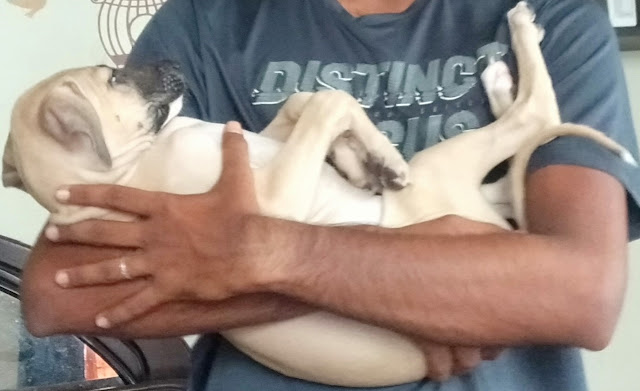Types of Dog Collars and Their Uses
These days we find a wide range of dog collars in the market and it is easy to get carried away by the sheer beauty of a collar; and it can defeat the very purpose behind a collar. Knowing the types of dog collars available and their uses goes a long way in choosing the right collar for your pet.
Before talking about dog collar types, let's have a look at the most common questions asked about dog collars.
1) When should puppies start wearing collars?
Puppy can wear collars when they are about 10 weeks old. This will also help them get used to collar by the time they are ready to be taken to the outside world for regular walks.
2) Should puppies and dogs wear collars throughout the day?
Puppies need not wear collars round the clock. Ditto for dogs. Constant rubbing of collars can affect your pet's skin. However, if possibilities of your puppy or adult dog going out on their own exist, it is best to let them be on collars 24x7.
3) Should dogs wear collar at night?
Puppies and dogs need not sleep with their collars on. Without a collar, dogs can scratch their necks if need be. Wearing collars all day may also cause breakage of fur. Remove the collar and let the little one slip to sleep without restraint.
4) Do collars make dogs calmer?
Calming collars work for most of the dogs. Calming collars release pheromones, which are chemicals naturally released into the environment by dogs and cats. These pheromones makes the little one feel safe and protected.
Uses of Dog Collars
Dog collars serve a variety of purposes. Some may wonder why dogs should wear collars. Here are some of the most important uses of dog collars:
Identification: This is the most important use of dog collar. A dog with a collar signifies that it is a pet with a family and this minimizes the chances of them being taken into shelters or relocated.
Lost pets always do not find their way back to their homes. Dog collars carrying specific details help with identifying the owner so the family can be re-united.
Restraint: Nothing helps like positive reinforcements while training a dog. However, if a sudden situation arises where your pet has to be immediately restrained, collar comes in handy.
Protection: Protective collars are used for certain purposes including preventing dogs from licking their wounds and to serve as flea control.
Types of Dog Collars
The most common types of dog collars are:
1) Flat collars
Flat collars are the most commonly used dog collars. They are normally available with metal buckles and come in a wide range of colors.
Visit this page for impressive collections of flat collars.
2) Breakaway CollarsAlso referred to as quick-release collars, are used to prevent choking hazard if the collar gets caught somewhere. The quick release fastener in breakaway collars, releases the collar pretty fast and prevents choking risk. The downside to these types of dog collars is that your pet may also lose the collar and therefore their identity details.
3) Rolled Leather Collars
Rolled leather collars, just like flat collars, are the basic types of dog collars. Rolled leather collar is a good choice for dogs with lots of hair. These types of dog collars are more durable.
4) Martingale Collars
Martingale collars discourage pulling by dog but the best part is that they are not hard on dog's neck. The tightening of collar is limited and just enough to remind your pet not to pull the leash.
Visit this page to buy martingale collars.
5) Calming Collars
As mentioned above, calming collars help to keep the puppies and dogs calm by releasing pheromones. Calming collars last for about 30 days.
Other than the above-mentioned collars, GPS pet tracker collars, flea collars and Elizabethan collars among other few collars are available in the market. They serve specific purposes.
Harness, which is generally categorized as a collar, is highly recommended for walks as it gives complete body control without stressing the pet's neck.






Comments
Post a Comment